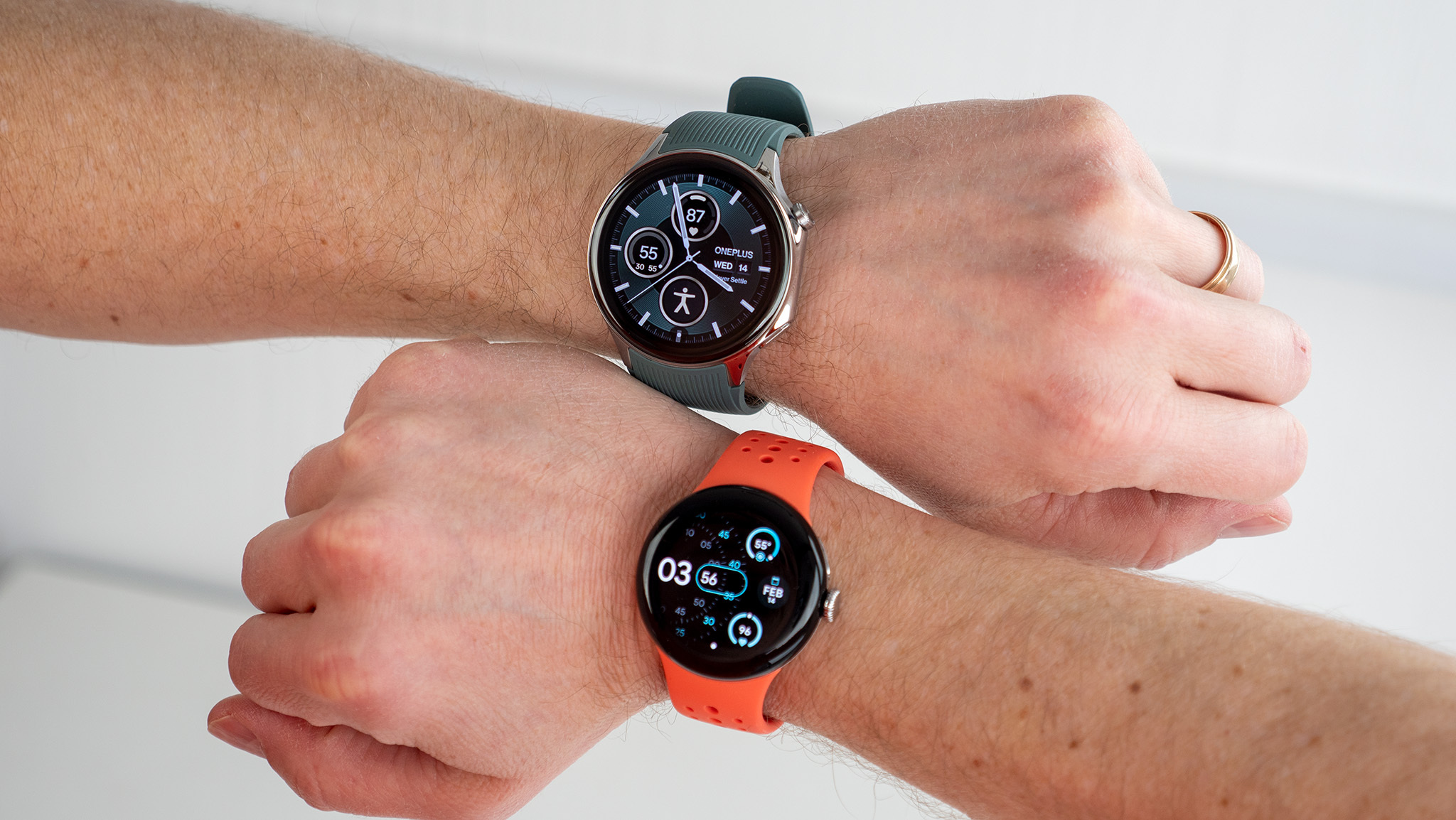
Unparalleled efficiency
The OnePlus Watch 2 blows past the old 80-hour standard of the Galaxy Watch 5 Pro for a Wear OS watch. Now that it has proper Play Store apps and Google Assistant, the Watch 2 gives Android watch fans a new option to consider. That said, it still uses OnePlus' own proprietary software behind the scenes, with some problems as a result.
For
- 100-hour battery life
- 6mm extra display space
- More rugged steel casing
- Dual-band GPS
Against
- Quite heavy, no smaller option
- Unreliable health & sleep data
- Buggy notifications
- Crown is only for show
Wear OS polish & Fitbit tools
Google lent its expertise to the OnePlus Watch 2's software, but its best Wear OS experience is still reserved for its own Pixel Watch 2. If you can accept the 24-hour battery life — and that's a big if, with the OnePlus Watch 2 overshadowing it — you'll prefer it for its superior health data and more effortless software tools.
For
- Light and comfortable design
- More polished Wear OS software
- Better/ more health & sleep data
- Only LTE option
Against
- Small, thick-bezeled display
- MUCH shorter battery life
- More expensive
The OnePlus Watch 2 vs. Pixel Watch 2 is an unexpected new Wear OS rivalry that gives Android fans two reliable watches with different strengths. That said, we still think there's one clear winner.
Google and OnePlus worked together to help develop the Wear OS hybrid software behind the OnePlus Watch 2. It runs Wear OS 4 off the Snapdragon W5 Gen 1 CPU — same as the Pixel Watch 2 — but it handles most background tasks through an energy-efficient co-processor running OnePlus' proprietary OS, helping it hit a 100-hour battery life.
The Pixel Watch 2 might also benefit from this new software system with its own Cortex M33 co-processor down the road. Right now, it typically only lasts one day per charge with AOD active, while the OnePlus Watch 2 lasts nearly three with AOD. In exchange, though, the Pixel Watch 2 measures much more useful health data, and it has other upsides that you may appreciate, like speedier Wear OS updates and better syncing with your Android phone.
Can the OnePlus Watch 2 join the Pixel Watch 2 among the best Android watches available this year? Here's what you need to know about how OnePlus' first Wear OS watch compares to Google's second.
OnePlus Watch 2 vs. Pixel Watch 2: Design and display

Both the OnePlus Watch 2 and Pixel Watch 2 have 2.5D, edge-to-edge displays with decently noticeable bezels, though Google's is slightly thicker and much more rounded. Compared to a flatter Android watch with thinner bezels like the Galaxy Watch 6, these watches have an unmistakable style that we appreciate, but also a decent amount of wasted space.
Unfortunately, unlike the Galaxy Watch 6, they both come in one set size instead of offering larger and smaller options. That automatically makes the Pixel Watch 2 better suited for people with smaller wrists, while the OnePlus Watch 2 suits those who prefer a larger display at the cost of a heavier design.
Specifically, the OnePlus Watch 2 weighs 18g more than the Pixel Watch 2 before taking the strap into account. Of the two Android Central staffers who tested the OnePlus Watch 2, one called it "quite comfortable despite the size," while the other noted that it "has a good heft to it, and doesn't feel light."
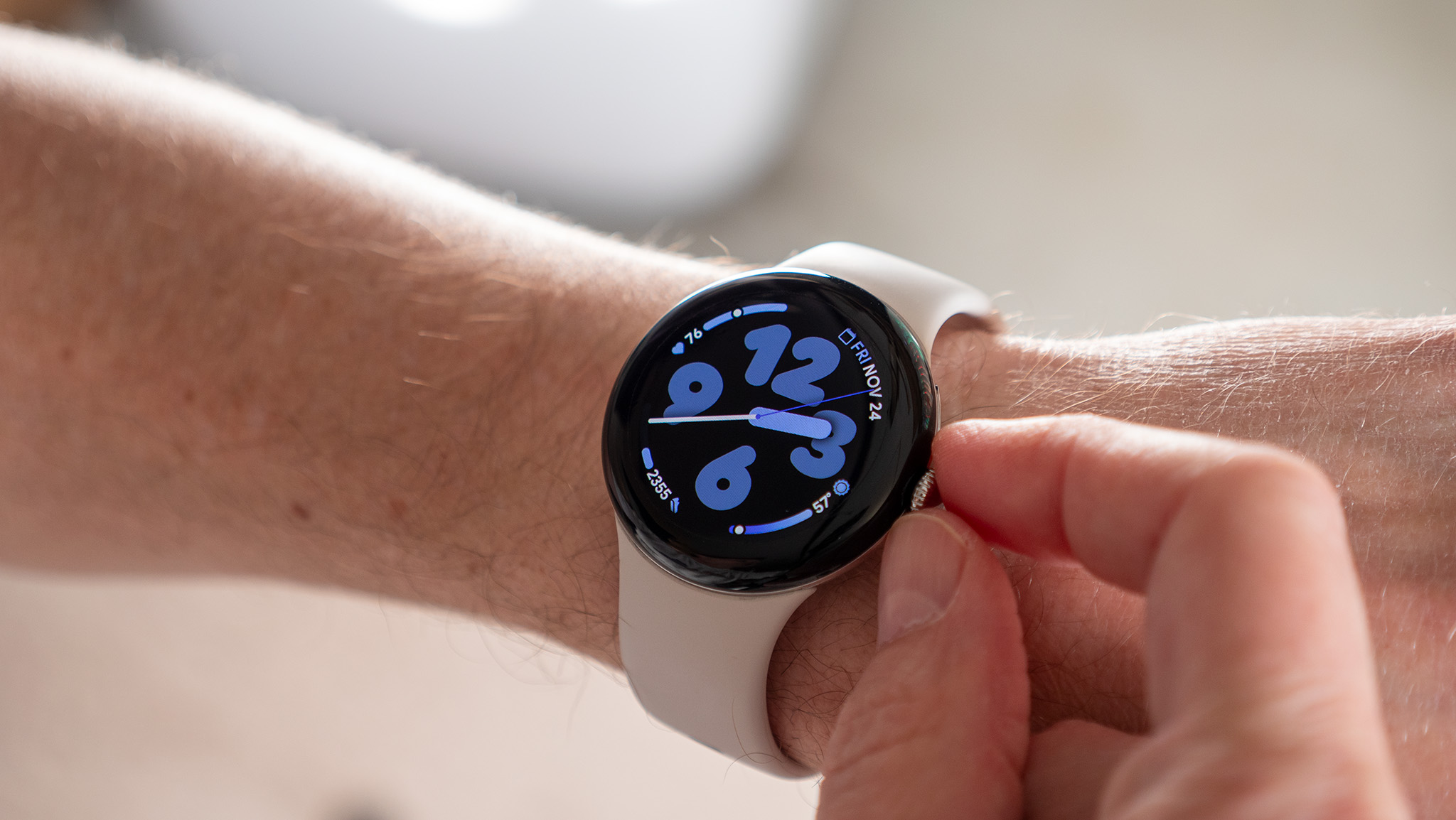
By contrast, the Pixel Watch 2 is comfortably light for any wrist. Google took the original Pixel Watch design and switched from stainless steel to aluminum to make it more comfortably light. Considering not much of the metal actually shows on the Pixel Watch 2, this seems like a good decision in our minds.
With the OnePlus Watch 2, however, the stainless steel casing is more plainly visible, giving it a luxurious look that we appreciate. More importantly, it has a MIL-STD-810H rating and sapphire glass for durability, whereas the Pixel Watch 2, with its rounded Gorilla Glass 5 display, is more vulnerable.
Both watches ship with a fluoroelastomer band, a material we like much more than silicone for its comfort and resistance to sweat and grime.
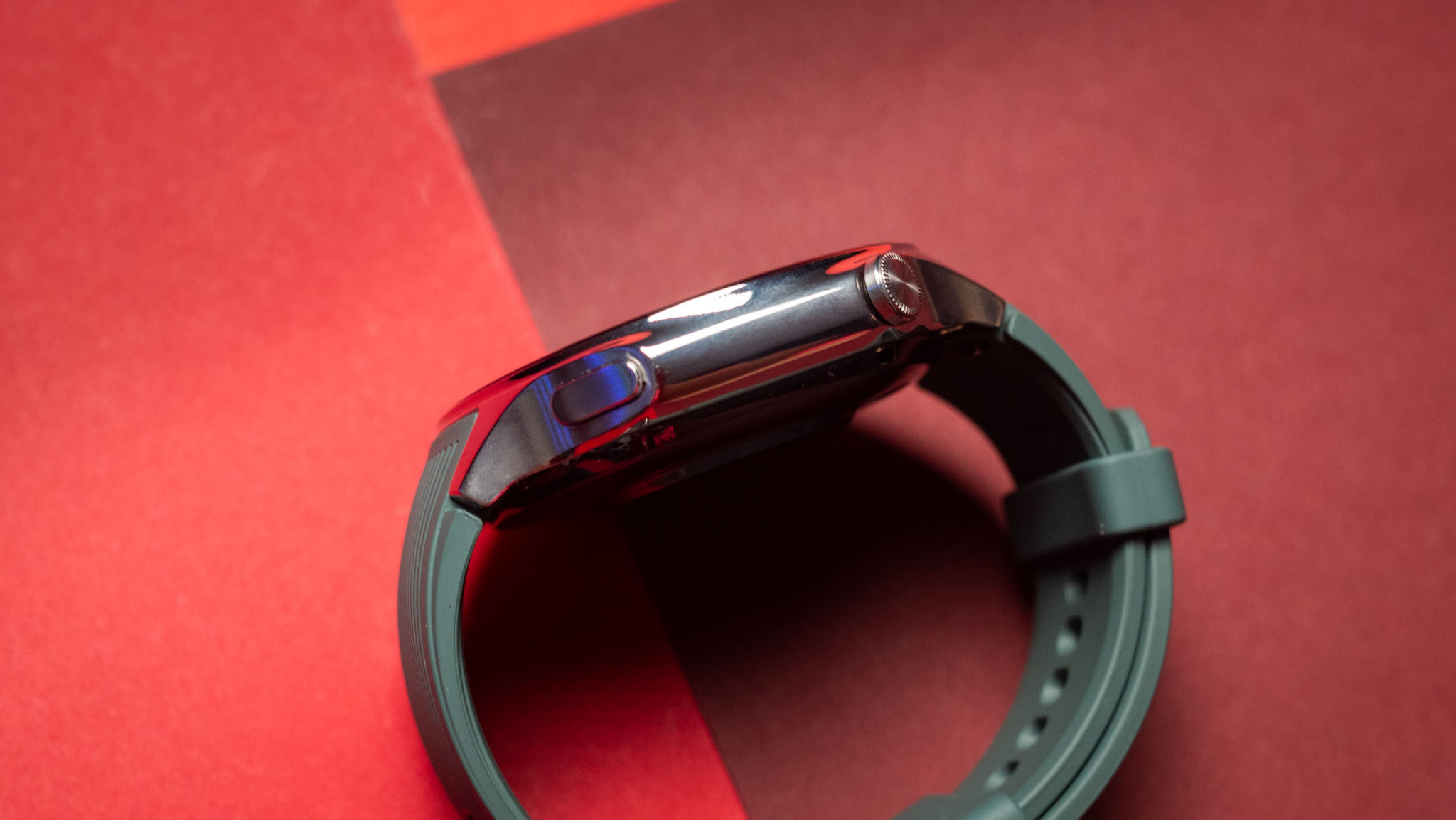
Both the Pixel Watch 2 and OnePlus Watch 2 have a dual-button layout, with a crown and a back button. Frustratingly, OnePlus' crown is "purely for aesthetics," as you "can't actually use the digital crown to navigate the interface." We wonder if OnePlus disabled this functionality for a reason, and if it will eventually patch it back in.
Until this is fixed, the Pixel Watch 2 has the advantage for navigation. The crown juts out enough that it's quite easy to turn, with some nice texture to it that helps you determine how much to turn it. The only negative is that it can bump into your wrist during certain exercises where it bends inward.
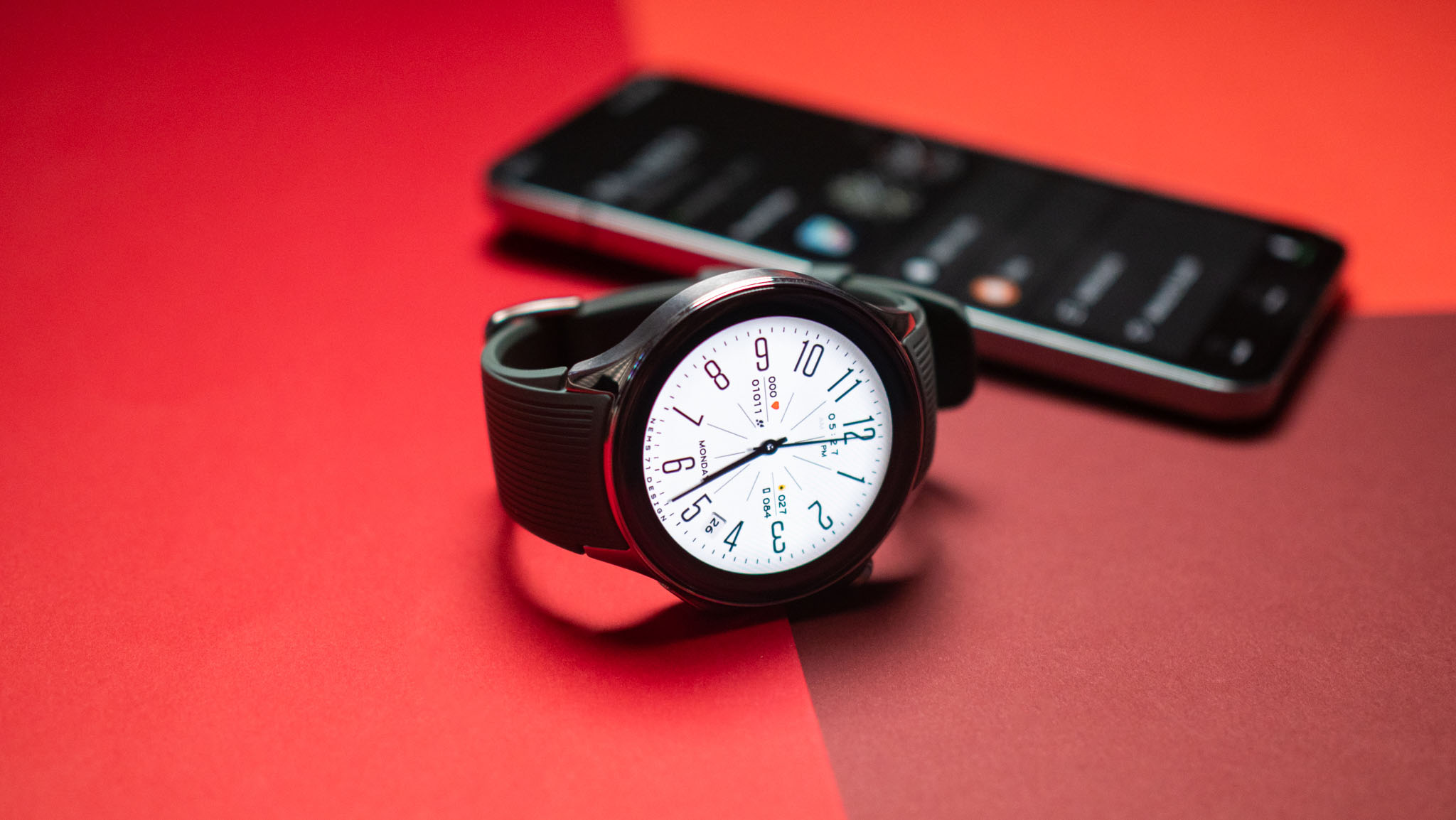
As for these watches' respective displays, the OnePlus Watch 2 display is 0.23 inches larger in diameter (1.43in. vs. 1.2in.), but the actual difference in pixels per inch (PPI) is only six (326 vs. 320 PPI), and both match one another in brightness (1,000 nits) and refresh rate (60Hz).
You'll have to decide if the OnePlus Watch 2's extra display space for notifications justifies the other trade-offs — while potential Pixel Watch 2 buyers will have to decide if they can accept a smaller display and shorter battery life in exchange for a more comfortable design.
OnePlus Watch 2 vs. Pixel Watch 2: Hardware, battery, and health
The Pixel Watch 2 and OnePlus Watch 2 share the same Snapdragon W5 Gen 1 processor, 2GB of RAM, and 32GB of storage.
The key difference is in their co-processors, or efficiency chipsets: Google uses a Cortex-M33 MCU that runs background tasks in the same Wear OS interface, while OnePlus uses a BES 2700 MCU Efficiency chipset that's based in RTOS, OnePlus' operating system used for the original OnePlus Watch.
The OnePlus Watch 2 may have an extra 194mAh of battery capacity compared to the Pixel Watch 2, but it's fairly standard for larger displays to require extra power to hit the same hourly estimate. For context, the 1.4-inch Galaxy Watch 5 Pro (590mAh) lasts 80 hours, as does the 1.43-inch TicWatch Pro 5 (628mAh), while the 1.3-inch Galaxy Watch 6 (300mAh) lasts 40 hours with the same capacity as the 24-hour Pixel Watch 2.

OnePlus' watch runs more efficiently than the competition to hit its 100-hour estimate, while the Pixel Watch 2 isn't especially efficient. That may change with Google's new Wear OS hybrid software, but we don't know that for certain.
Once the battery runs out, the Pixel Watch 2 takes 75 minutes to climb back to full charge; the OnePlus Watch 2 can take as little as an hour, but you'll need a OnePlus brand charging brick to hit higher speeds.
In terms of performance speed, our Pixel Watch 2 reviewer described it as "noticeably snappier" than its Exynos-based predecessor, with almost no delay when opening apps. Our OnePlus Watch 2 reviewer, meanwhile, called it "a Nissan Leaf with a V8." It mostly runs very efficiently, but occasionally switches to overdrive, and you "don't really notice the switchover" between the main Wear OS processor and energy-efficient RTOS chip because it's consistently speedy.
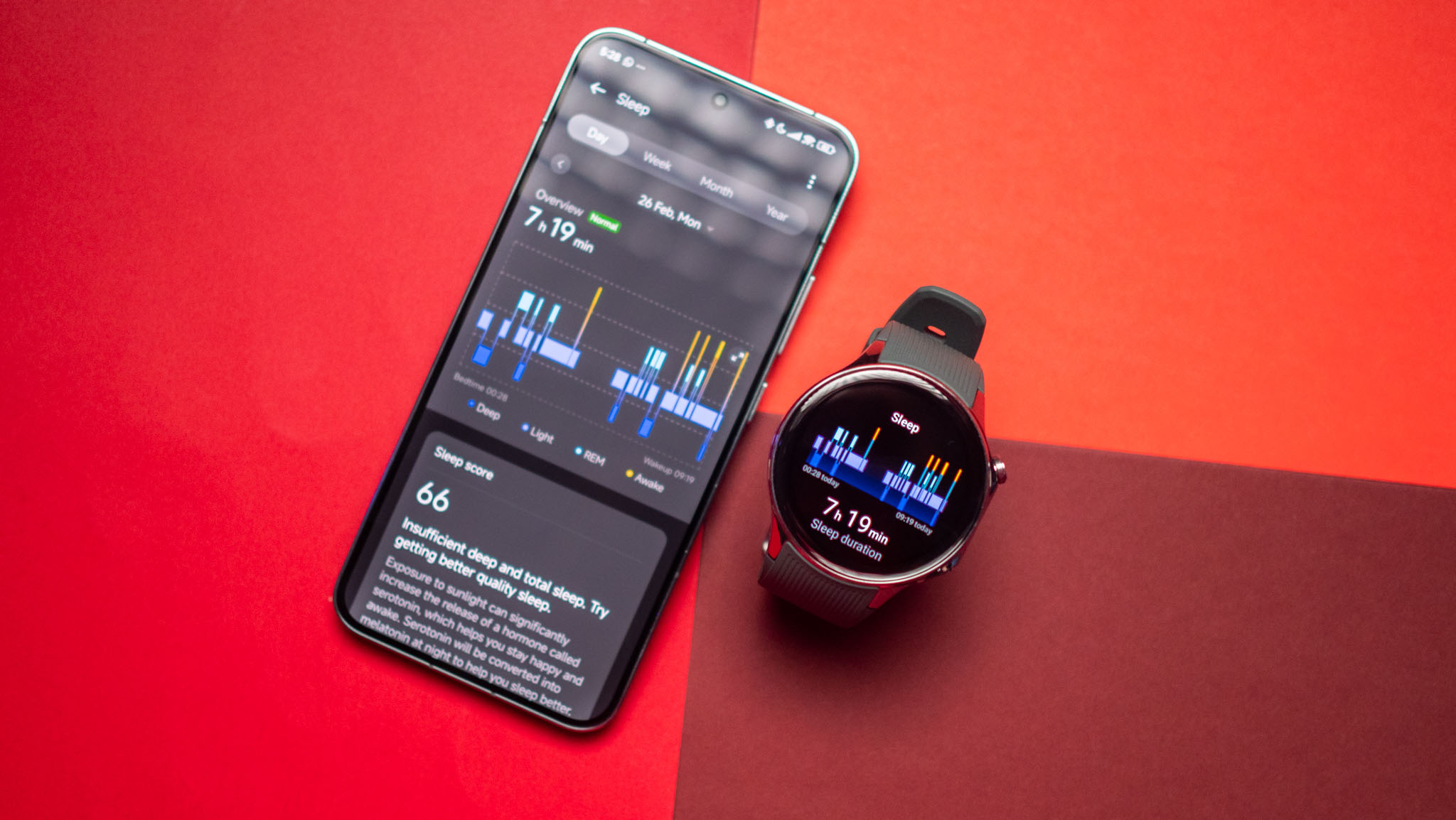
Turning to sensors, the Pixel Watch 2 and OnePlus Watch 2 each have an accelerometer and gyroscope for workout and step tracking, an altimeter for elevation data, and a compass for navigation. They also measure your heart rate, blood oxygen, and stress levels.
Only the OnePlus Watch 2 supports dual-band GPS tracking that pulls from multiple satellite frequencies, better pinpointing your location for running, cycling, or hiking.
The Pixel Watch 2, on the other hand, offers both active and passive AFib detection for heart health, along with skin temperature readings at night. It also has a dedicated body response (cEDA) sensor that detects electrodermal changes in your skin that indicate stress, giving you more accurate data than the OnePlus Watch 2's optical HRV data.
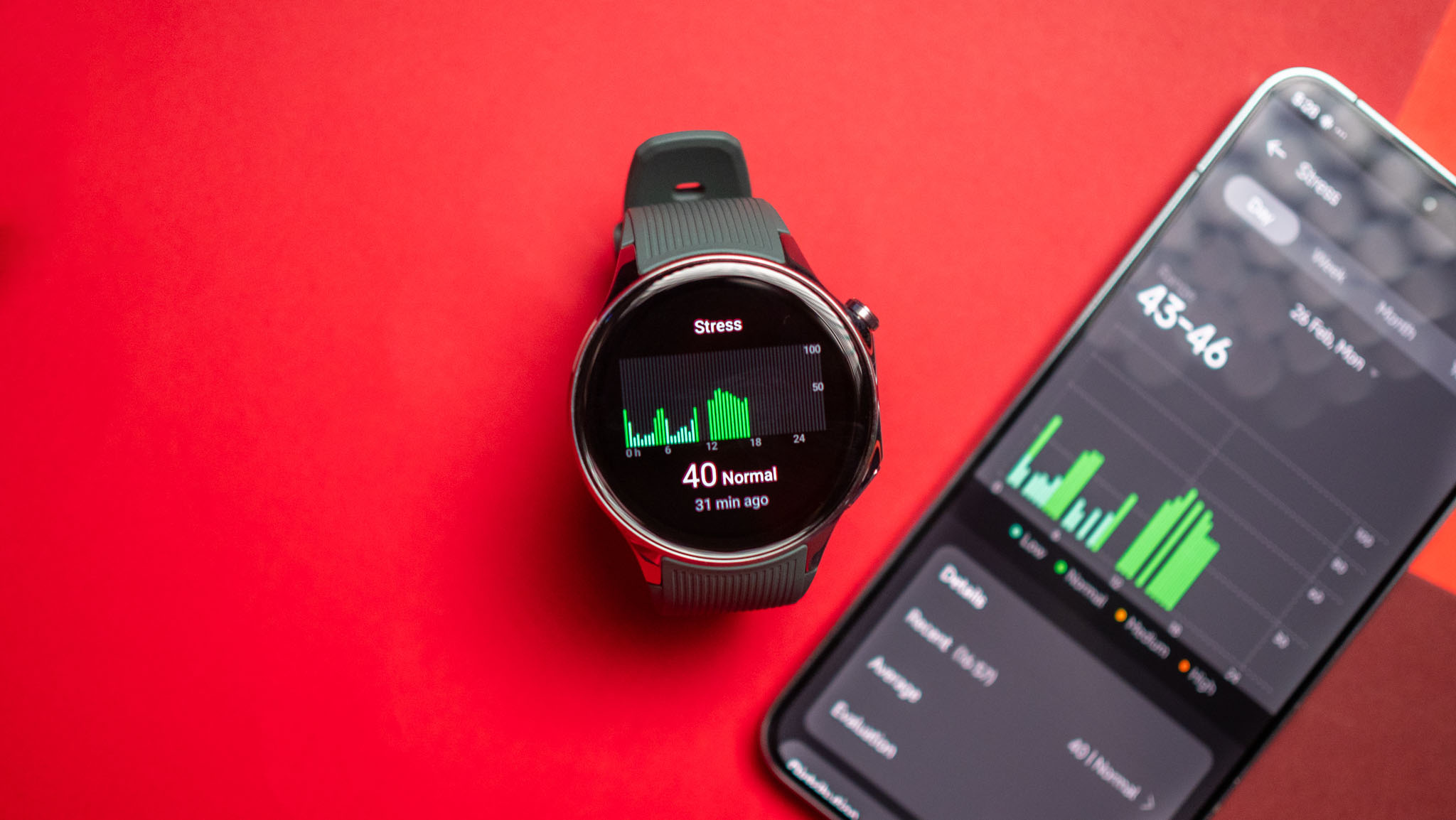
Here's where things started to fall apart for our OnePlus Watch 2 reviewer. The RTOS software that makes the Watch 2 so long-lived is in charge of health sensor logging, and our reviewer noted some serious inconsistencies as a result.
It was "off by a margin of 15% at measuring calories burned" compared to the Apple Watch Series 9, it logged a "lower percentage of time in deep sleep" than was accurate, and the stress results were "hilariously bad."
This wasn't an isolated experience: our other OnePlus Watch 2 tester found the watch would tell him he was "awake" for over an hour during sleep instead of lightly sleeping. After a CrossFit workout wearing both the Pixel Watch 2 and OnePlus Watch 2, he found that OnePlus grossly underreported the amount of time spent in anaerobic or threshold heart rate zones, as if it couldn't properly pick up heart rates above a certain level.
We suspect that the OnePlus Watch 2 might not poll your heart rate as often or as quickly, in its attempt to make the battery last 100 hours. We'd be much happier if it lasted half that time but gave more accurate results.
Lastly, only the Pixel Watch 2 has an LTE option for $50 more, whereas OnePlus told our reviewer that it "made the decision to not launch a cellular version as sales of these models are usually lower than that of the standard Wi-Fi variants."
OnePlus Watch 2 vs. Pixel Watch 2: Software
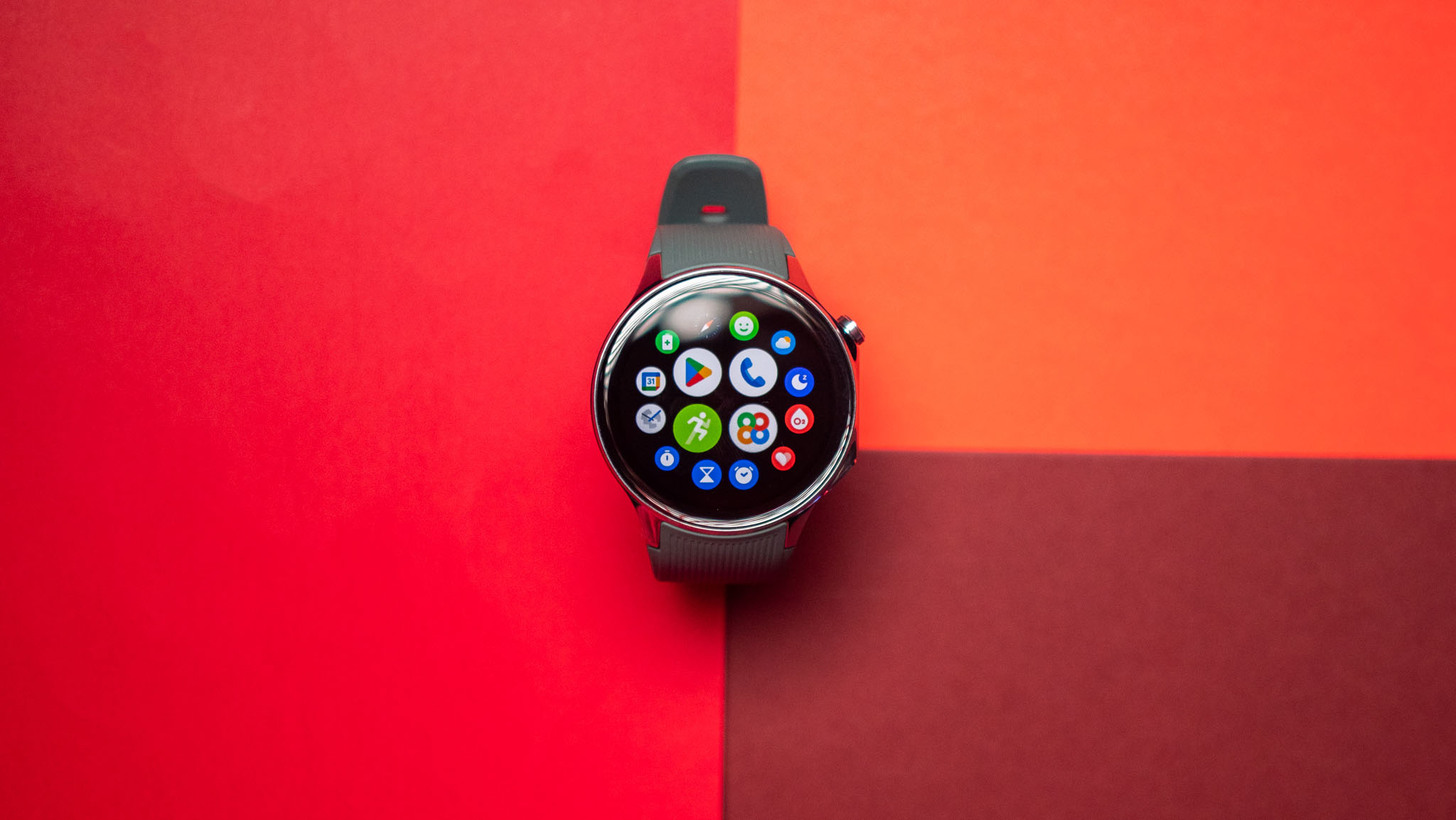
One of the best changes from the OnePlus Watch to the OnePlus Watch 2 is that the newer watch added Wear OS, while the first-gen model only had a proprietary RTOS interface that didn't support third-party apps. With full access to Wear OS 4's Play Store of apps and Google Assistant, the Watch 2 gives Android watch fans a new option besides Samsung and Google, now that Fossil has abandoned Wear OS and Mobvoi remains stuck on Wear OS 3.
That said, the OnePlus Watch 2 continues to rely on RTOS for many basic applications like notifications, which frustrated our reviewer, saying it "needlessly makes things complicated."
Specifically, he found that some notifications would buzz your wrist but not appear on the display; that the watch doesn't automatically import your phone's Do Not Disturb or Sleep settings, sending you notifications when it shouldn't; you have to manually toggle sleep mode ever night, so it would wake him up if her forgot; and it didn't properly work with Google Pay, making the NFC functionality useless.
You won't have any such issues with the Pixel Watch 2. It's pure Wear OS 4 with Google's trademark software polish and the promise of more speedy updates down the road. We can hope OnePlus will resolve some of its issues with time, but you know with Google that you aren't stuck with a less-advanced OS behind the scenes to begin with.
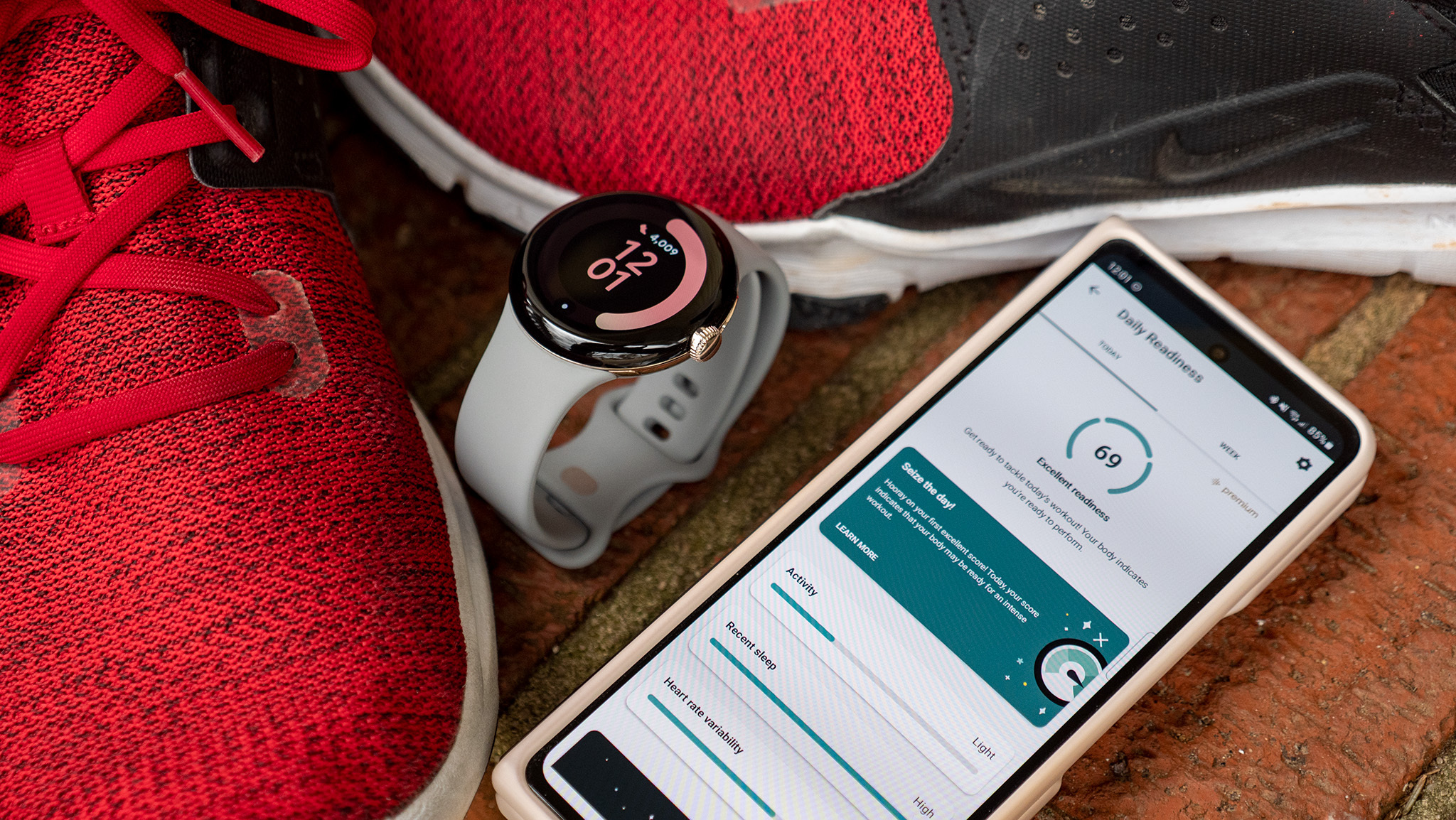
The other key software difference between these two watches is related to health and fitness. The Pixel Watch 2 comes with six free months of Fitbit Premium, defaulting to sending all of your data there.
OnePlus has its own proprietary health app for checking your sleep and workout summaries, but it's much more basic than what Fitbit's paid program brings to the table (like guided workouts and health reports). Both watches do have automatic pausing and resuming during workouts, as well as automatic workout recognition in a few categories.
OnePlus Watch 2 vs. Pixel Watch 2: Which should you buy?

The OnePlus Watch 2 retails for $299, $50 less than the Pixel Watch 2 — though you can frequently find the latter on sale for about the same price.
Add in its epic battery life, larger display, and durable design, and the pieces are in place for the OnePlus Watch 2 to become a great Android smartwatch. It certainly has its upsides over the Pixel Watch 2, which feels like it's still a generation behind the competition in some areas.
That being said, it's hard to get past the RTOS software issues with health data and notifications, the fundamentals of any smartwatch that you want to be effortless and invisible. The Pixel Watch 2 will properly measure your sleep quality, stress, and heart health, with Fitbit sensors packed into a more comfortable design. Plus, it's more likely to get Wear OS 5 before any other Android brand, OnePlus included.
With their comparable performance and overall quality, your OnePlus Watch 2 vs. Pixel Watch 2 decision may come down to longevity and style versus comfort and polish.
Battery first, polish second
If OnePlus can fix some of the fundamental software issues with the OnePlus Watch 2, such as better health data sampling during workouts or better notification settings, this could easily be one of the best Android watches available today. For now, we mainly recommend this watch for its incredible battery and style.
Polish first, battery second
Can you accept having to charge your smartwatch once a day, and reading notifications on a petite, thick-bordered display? The Pixel Watch 2 has its trade-offs, but it's undoubtedly one of the best Android watches available right now, with the Galaxy Watch 6 as its closest competition. If you want a larger display, the Pixel Watch 3 is rumored to get one.







